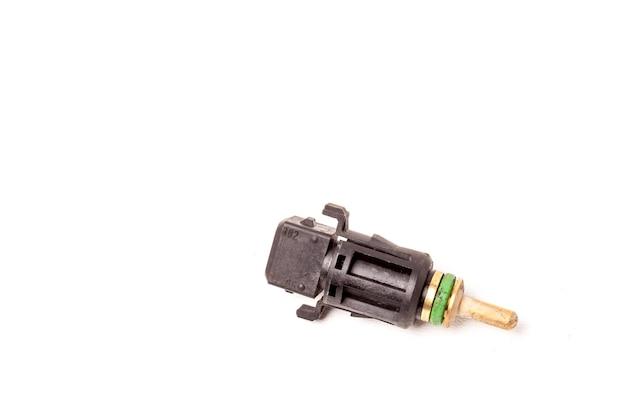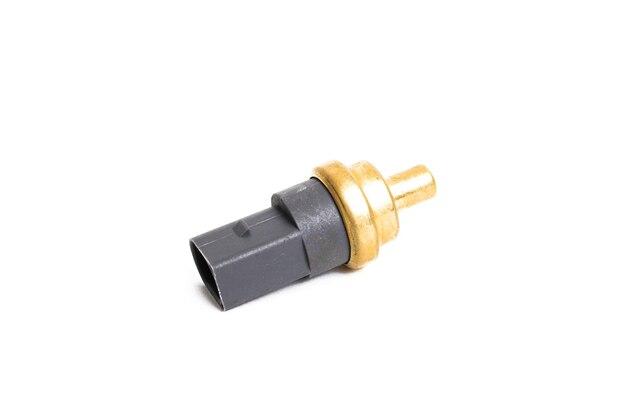Are you experiencing issues with your vehicle’s temperature gauge? Wondering how long a coolant temperature sensor should last? In this blog post, we’ll delve into the lifespan of a coolant temperature sensor and address common questions related to its functionality.
The coolant temperature sensor is a vital component of your car’s engine system. It measures the temperature of the engine coolant and provides crucial data to the engine control unit (ECU). Through this sensor, the vehicle’s computer can regulate fuel injection, ignition timing, and other engine processes.
But just like any other part, the coolant temperature sensor has a limited lifespan. Understanding when to replace it can help you avoid potential engine problems and ensure your vehicle runs smoothly. So, let’s dive in and explore the signs of a failing coolant temperature sensor and the average lifespan you can expect.
How Long Does a Coolant Temperature Sensor Last
If you’re wondering about the lifespan of a coolant temperature sensor, you’re not alone. This little device plays a crucial role in regulating your engine’s temperature, and knowing how long it will last can help you plan for potential replacements down the road.
The Expected Lifespan
On average, a coolant temperature sensor can last anywhere from 50,000 to 100,000 miles. However, it’s important to note that this is just an estimate, as several factors can influence its longevity.
Factors that Affect Lifespan
-
Quality of the Sensor: Like with any automotive part, the quality of the coolant temperature sensor can vary. Higher quality sensors often come with a longer lifespan, so investing in a reputable brand can save you headaches in the long run.
-
Driving Conditions: Extreme temperatures, such as scorching summers or freezing winters, can put additional strain on the sensor. If you frequently drive in such harsh conditions, it might wear out faster than expected.
-
Maintenance: Regular maintenance, including flushing and replacing the coolant, can help prolong the life of the sensor. Neglecting this crucial upkeep can lead to premature failure.
Signs of a Failing Sensor
-
Erratic Temperature Gauge: If you notice your temperature gauge fluctuating or giving inaccurate readings, it could be a sign of a failing sensor. Keep an eye on this and get it checked out by a professional if you suspect an issue.
-
Check Engine Light: A faulty sensor may trigger the dreaded check engine light. Though this warning light can indicate various issues, a failing coolant temperature sensor is a common culprit.
-
Poor Fuel Efficiency: A sensor that’s not functioning properly can disrupt the engine’s combustion process, leading to decreased fuel efficiency. So, if your fuel economy starts plummeting unexpectedly, don’t rule out the sensor as a potential cause.
When to Replace
While the general mileage estimate is a helpful guideline, it’s essential to rely on symptoms rather than just the odometer. If you experience any of the signs mentioned above, it’s wise to consult a professional mechanic to diagnose the issue accurately.
Now that you know more about the lifespan of a coolant temperature sensor, you can stay vigilant for any signs of trouble. Regular maintenance and being attentive to unusual engine behavior will ensure that your sensor lasts as long as possible. Remember, a healthy engine is a happy engine!
FAQ: How Long Does a Coolant Temperature Sensor Last
Why does the coolant temperature sensor keep going out
Sometimes, the coolant temperature sensor can go bad due to normal wear and tear. However, there can be other factors at play, such as electrical issues or exposure to extreme heat. It’s always recommended to have a professional mechanic diagnose the exact cause of the sensor failure.
Can a temperature sensor affect engine starting
Yes, a faulty coolant temperature sensor can indeed affect engine starting. The sensor provides vital information to the engine control unit (ECU) about the temperature of the coolant. If the sensor is malfunctioning, the ECU may receive incorrect temperature readings, causing issues with engine starting.
Where is the coolant temperature sensor located
The location of the coolant temperature sensor can vary depending on the make and model of your vehicle. In most cases, you can find it near the engine’s thermostat housing or on the cylinder head. It is advisable to consult your vehicle’s owner’s manual or seek professional assistance to locate it accurately.
What does the air cleaner temperature sensor do
The air cleaner temperature sensor monitors the temperature of the incoming air into the engine’s air intake system. It helps the engine management system adjust the air-to-fuel mixture ratio for optimum performance and fuel efficiency. This sensor plays a crucial role in ensuring smooth engine operation.
Can you drive with a malfunctioning coolant sensor
While it is technically possible to drive with a malfunctioning coolant temperature sensor, it is not recommended. Without accurate temperature readings, the engine may not receive the proper fuel-to-air ratio, which can lead to poor performance, decreased fuel efficiency, and potential engine damage. It’s best to address any sensor issues promptly.
When should I replace my coolant temperature sensor
There is no set lifespan for a coolant temperature sensor, but it is generally recommended to replace it every 50,000 miles or every five years, whichever comes first. However, if you experience recurring issues related to the coolant temperature sensor, it is advisable to have it inspected and replaced if necessary.
What are signs of a malfunctioning thermostat
A malfunctioning thermostat can cause several symptoms, including:
- Engine overheating
- Fluctuating or inconsistent temperature gauge readings
- Poor heater performance
- Coolant leakage
- Engine misfires or rough idling
If you notice any of these signs, it may be an indication that your thermostat needs replacement.
How do I know if my temperature sensor is working
To check if your temperature sensor is working correctly, you can use an OBD-II scan tool to read the live data from the sensor. Alternatively, you can monitor your vehicle’s temperature gauge while the engine is running. If the gauge reflects the actual temperature changes, it is likely that your sensor is functioning correctly.
How do you clean a temperature sensor
Cleaning a temperature sensor usually involves removing it from its housing and gently wiping it with a clean cloth or brush. It’s important not to use harsh chemicals or abrasive materials that could damage the sensor. However, cleaning may not always resolve sensor issues, and it’s often best to replace a malfunctioning sensor.
Can a coolant temperature sensor be cleaned
Yes, in some cases, a coolant temperature sensor can be cleaned if the issue is related to dirt or debris buildup. However, cleaning may not always solve the problem if the sensor is failing due to internal electrical or mechanical issues. If cleaning doesn’t rectify the problem, it is advisable to replace the sensor.
How much does it cost to replace a coolant temperature sensor
The cost of replacing a coolant temperature sensor can vary depending on the make and model of your vehicle and the labor charges of the repair shop. On average, you can expect to pay between $100 and $200 for parts and labor. It’s always best to consult with your mechanic for an accurate estimate.
How do I know if my coolant temp sensor is malfunctioning
A malfunctioning coolant temperature sensor can exhibit several signs, including:
- Inaccurate temperature readings on the gauge or dashboard
- Persistent overheating or frequent engine temperature fluctuations
- Poor fuel efficiency
- Engine misfires or rough idling
- Check Engine light illuminated on the dashboard
If you experience any of these symptoms, it’s advisable to have your coolant temperature sensor checked and replaced if necessary.
How many temperature sensors does a car have
The number of temperature sensors in a car can vary depending on the vehicle’s make and model. Typically, most cars have at least two temperature sensors: one for the engine coolant temperature and another for the ambient air temperature. However, some vehicles may have additional sensors for specific systems, such as the transmission or air conditioning.
Can a faulty coolant temp sensor cause the AC to malfunction
While it’s rare, a faulty coolant temperature sensor can potentially cause issues with the air conditioning system. If the sensor provides incorrect temperature readings to the engine control unit, it may result in improper cooling system operation, which can indirectly affect the AC performance. It’s advisable to have any sensor issues addressed promptly to avoid further complications.
Is a temperature sensor the same as a thermostat
No, a temperature sensor and a thermostat are not the same. A temperature sensor measures the temperature of a specific component or area, such as the coolant, air intake, or ambient temperature. On the other hand, a thermostat is a mechanical valve that regulates the flow of coolant through the engine, helping maintain the ideal operating temperature.
How do you test a temperature sensor on a car
Testing a temperature sensor generally requires the use of a multimeter to measure the resistance or voltage output of the sensor. By comparing the readings to the specifications outlined in the vehicle’s service manual, you can determine if the sensor is functioning within the appropriate range. Alternatively, you may choose to have a professional test and diagnose the sensor for accuracy.
Why does my coolant light come on when it’s cold outside
If your coolant light comes on when it’s cold outside, it could be due to a faulty coolant level sensor or a temperature sensor providing incorrect readings to the engine control unit. It’s advisable to have your vehicle inspected by a qualified mechanic to accurately diagnose and resolve the issue.
How often do coolant temperature sensors go bad
Coolant temperature sensors generally have a long lifespan and can last anywhere between 50,000 to 100,000 miles or more. However, various factors such as extreme temperatures, electrical issues, or exposure to contaminants can affect their longevity. Regular maintenance and timely replacement can help prevent sensor failures and ensure optimal engine performance.
Disclaimer: The information provided in this FAQ-style subsection is as of 2023 and is intended for educational purposes only. Always consult your vehicle’s owner’s manual and seek professional assistance for specific advice concerning your vehicle and its components.

